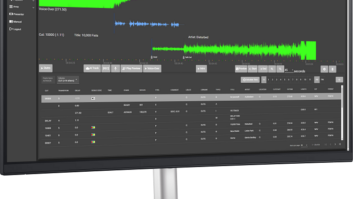The recently concluded 2008 CES convention showed that IBOC continues to make small but steady gains in the consumer marketplace, at least in terms of receiver products offered. Nevertheless, a number of important issues will soon need to be addressed and resolved in a positive way if IBOC is to continue on an upward path.
Some of these are already well known but may reach a critical stage soon, while others have yet to emerge broadly. We consider all identified possibilities here.
Anti AM IBOC
Sentiment against AM IBOC is gradually morphing from a fringe movement to a serious threat, as official complaints are being filed at the FCC, and major AM stations are pulling the plug on their IBOC exciters. It will be interesting to see what response comes from the FCC in the coming months, if any.
Meanwhile, the increasingly vocal anti-IBOC movement seems to still be contained to smaller, independent stations, but the real impact will come from what broadcasters do rather than say. If any other major broadcast groups drop AM IBOC, the format will be in serious trouble.
On the other hand, some have countered that AM broadcasting is already largely a fossil on today’s media landscape, so how much worse can AM IBOC make it, and could it ultimately bring a net benefit to the senior radio band if enough listeners purchase new receivers?
Along the same lines, the impact of AM IBOC’s woes on the fate of HD Radio overall is also unknown. Even if the AM IBOC format were completely abandoned in the future, it could have little negative effect on FM IBOC’s success. Existing IBOC radios would simply remain analog-only AM receivers, and still provide HD Radio features for FM stations. AM stations would not benefit, but in the opinion of some today, having everyone turn off their AM IBOC signals would effectively be an improvement over the status quo.
Meanwhile, another more palatable future improvement (such as DRM) might come along for AM stations. There’s plenty to ponder in the near future here.
Moving too slowly?
The relative lack of strong consumer interest in HD Radio is well documented, and the longer this malaise continues, the harder it will be to reverse. So far, at least, the reliance on multicasting to solve this problem has not had its desired effect, and there does not seem to be any other white knight on the horizon. Thus it remains a vexing issue for the industry.
The concurrent development of other media devices and services only deepens the gloom here. Of particular interest is the nascent trend toward streaming media reception on broadband wireless devices, both handheld and mobile. If this practice moves from its present enthusiast state to the mainstream, IBOC may be lost in the noise.
New media devices are implementing technologies that reflect the trend of “mobile convergence.” In this arena, numerous “radios” are contained in a single device, such as WiFi, Bluetooth, GSM or CDMA, WiMAX or EV-DO (or other competing wireless broadband technologies) and the like.
Getting a broadcast radio receiver — particularly of the IBOC form — included in the mix is a difficult task, especially for handheld devices, given their physical-space, antenna, battery-life and cost constraints. In fact, when these new device makers talk about the “radio(s)” in their designs, they are hardly ever referring to an AM/FM receiver.
This is not to say that radio will suffer tremendous losses as a result of not having an IBOC receiver on board these popular new products, but only that its digital transition strategy may be in peril. The radio industry may need to shift its hopes for new platforms from IBOC and Internet radio to Internet radio alone (in both its wired and wireless modes).
What lurks
If these issues weren’t enough, there are others that may arise in the near future.
The first is the now growing concern that many current HD Radio receivers exhibit sensitivities that reduce most stations’ digital coverage to a substantially smaller area than their analog services. This is particularly evident with indoor reception in tabletop models, which are the highest-selling form factors to date. In some cases, there are anecdotal reports that even the analog sensitivity of receivers is lower than their analog-only counterparts.
This implies that external antennas or placement near windows is required to successfully receive IBOC signals (of particular importance to multicast services, of course), making these terrestrial receivers not much better than satellite radios of similar form factor in terms of service availability.
Moreover, it provides a poor user experience to consumers who actually go to the trouble of purchasing IBOC tabletop receivers and find that it doesn’t give them any more (or in some cases, less) service than their old analog radios. While this is likely to be improved upon by subsequent receiver designs, or even by contemplated changes in digital-carrier power levels, the old adage, “You never get a second chance to make a first impression,” certainly applies here. Future improvements may be too little, too late.
Digital disincentive
Finally, a very different issue may emerge soon, much to the consternation of terrestrial radio broadcasters: You’ve likely heard about the music industry’s push to have new performance royalties for music recordings applied to terrestrial radio, just as they do for Internet and satellite radio. The primary (and statutory) reason that terrestrial radio has remained immune to these royalties is because it has remained a strictly analog service, while the other services have been digital since their inception.
Now that terrestrial radio also has a digital component, its exemption from the digital performance royalties becomes less defensible. Proponents of the added royalties surely will cite this new form of terrestrial radio broadcast as falling within the new “digital jurisdiction.”
One possible outcome is that the new digital royalties will be assessed on a pro-rated basis that takes into account the current and projected penetration of IBOC receivers in the marketplace. Thus the royalties would be assessed on a percentage of main-channel services, and 100 percent of multicast services, with increasing rates over time (likely assessed over a five-year terms, with reassessments reviewed as each period comes to a close, just as in the Internet and satellite radio venues). The better IBOC fared, the more new royalties broadcasters would have to pay.
This would put terrestrial broadcasters in a difficult position: Increasing success of their IBOC services would likely result in a penalty to their bottom line through higher digital royalty costs. How broadcasters would resolve this conundrum is purely speculative, of course, but you can guess how it might play out, and which side of the operation would likely prevail in the internal struggle that this scenario engenders.
We are still in the midst of the U.S. radio industry’s digital transition, but it’s clear that there are still plenty of bends in the road between here and the finish line.












